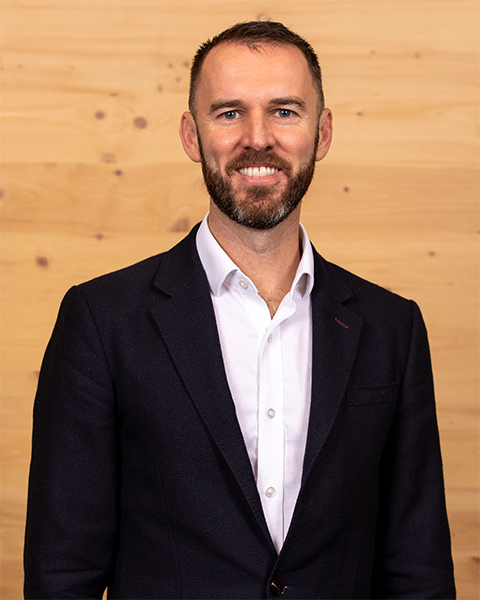In this guest article, Silverfin’s Cameron John shares how to create new client service revenue opportunities by following their “four sights of connected accounting”.
Accountancy is changing and radically – and it seems like everyone is talking about it. In a recent Sage survey of over 3,000 accountants, 90% agreed that their profession was undergoing a fundamental transformation. At Silverfin we believe technology is a key driver of change. We’re not alone – 85% of this survey’s respondents recognise they need to pick up the pace of technology adoption to remain competitive. Accountancy is not alone. It’s important to realise accountancy is not alone. In every industry, business leaders are looking for the opportunity in all the change caused by technology and have factored it in as an intrinsic part of their growth strategy, over 90% of CEOs according to KPMG.
So where is ‘digital transformation’ taking accountancy in particular? In short – into a connected future. As technology moves accounting in this direction to greater connectedness, its line of sight is shifting from dealing in the past to a real-time, dynamic view of the now, and using data to predict the future. Clients will still value the financial work that tells them what they did last year, but they will value more accountants who not only meet their needs today but anticipate what they will need tomorrow. The ability to develop this forward-facing line of sight will be what sets firms apart in this new age.
Success will come to those firms that use technology to connect real-time client data with automated workflows or processes. Then collaborate, and communicate, with clients to get their compliance work completed efficiently. Freeing up valuable time to invest in understanding their clients’ businesses and using the data and insights their technology provides to power their advisory services. All this achieved within one, integrated, cloud accounting platform. We call this connected accounting – a fundamental shift in purpose for accounting firms from delivering a transactional, compliance service to the creation of an advisory relationship founded on a deep understanding of the data that drives their clients’ businesses and insight gained from that.
But how many firms are already working in this ‘connected way’ and what role does technology play? According to our recent research, the vast majority of our respondents can see where they need to be. 76% believe that in five years’ time, most of their revenue will come from consultancy and advisory services, in contrast to today, where bookkeeping and compliance are their main business. Yet when we look at the way accountants are using technology to achieve this goal, our survey illustrates a profession where most have responded well to the initial challenges and opportunities presented by changing client expectation and increasing competition but may have lost momentum in their digital transformation. Respondents have achieved a good level of digital maturity on foundational capabilities such as migrating to the cloud, data connectivity, and online collaboration with clients and colleagues. But when it comes to the next stage – automating processes and standardising practices across the firm – the picture is less clear.
That’s why we decided to offer a framework that helps accountancy firms in their transformation process. It’s called the Four Sights of Connected Accounting. You will become a connected accountant when your firm has successfully passed through four key stages of digital maturity. As you pass through each stage your firm, team and clients are more connected; you unlock new opportunities for greater productivity, the development of new services, improved competitiveness and more revenue. So let’s explain more.
Fullsight
This is the foundation of connected accounting and focuses on data. The digitisation and consolidation of all client financial data, whatever the source, in one central data hub. A home for all your clients’ data that is structured consistently. Updated automatically, in real-time, from multiple bookkeeping systems and other sources, even paper files. All this data is, securely accessible to you, your teams and your clients. Fullsight is about creating a reliable single source of truth – a complete vision of all your client data, up to date and available to you at all times. The basis on which all work – compliance or advisory – can begin.
Hindsight
Once you have all your client data, current and historic, centralised, standardised and always available, you can move on to Hindsight. This second stage of connected accounting moves from collating and standardising data, to utilising data in practical ways. Hindsight is all about applying your data in automated accounting workflows to create an accurate view of the past. To streamline your compliance and reporting processes and improve its accuracy.
Insight
Fullsight and Hindsight allow you to transform your workflows. Insight – the third stage of connected accounting – is where you start to develop your value-added advisory capabilities. Insight is all about putting yourself in a position to offer advice and guidance to your clients. You have the tools to look at the meaning behind the numbers and extract valuable business intelligence. And you’re also able to contact clients directly when immediate action will have the most impact on their business performance.
Foresight
Finally, we move from looking at past performance to using data and analytics tools to predict the future and power the development of new value-added advisory services. Foresight is the final step in the transformation of a firm from compliance reporting to trusted business advisor. Foresight is about connecting more deeply with your clients’ businesses and building your status as the most trusted advisor. Only by efficiently connecting with all financial data in real-time can you connect with your clients in a way that will deliver tangible benefits to their business, as well as unlock new services and revenue streams for your firm.
So in summary, connected accounting will transform the way you work. It will improve the quality, speed and competitiveness of your compliance business and make it easier to deliver advisory services that will unlock new revenue streams and deepen your client relationships. It will also mean you attract, and retain, the best talent and give them the time they need to invest in delivering the high-quality advisory services your clients will love, and they will love providing.
Yet despite the benefits of connected accounting, 85 percent of accountants believe that they need to speed up the pace of technology adoption to remain competitive, but are held back by a lack of time, money and limited expertise in their team. So success in connected accounting will depend on making the right choice of technology partner. Doing nothing – or choosing the wrong partner – puts your business at risk over time of losing clients to more digitally mature firms who will be better placed to meet clients’ changing needs.

Cameron John is a highly experienced leader that specialises in helping accountancy practices align their goals to the most relevant technologies.


